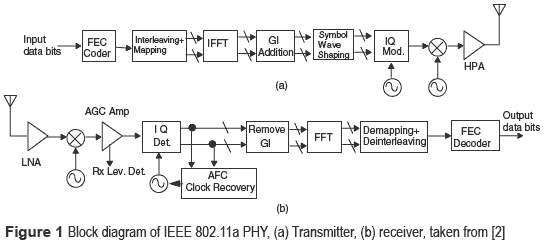
- #VHDL MODELING OF WIFI MAC LAYER FOR TRANSMITTER AND RECEIVER MODULE HOW TO#
- #VHDL MODELING OF WIFI MAC LAYER FOR TRANSMITTER AND RECEIVER MODULE SERIAL#
- #VHDL MODELING OF WIFI MAC LAYER FOR TRANSMITTER AND RECEIVER MODULE SOFTWARE#
- #VHDL MODELING OF WIFI MAC LAYER FOR TRANSMITTER AND RECEIVER MODULE SERIES#
The ethernet protocol is available as a module and also as a shield for establishing an internet connection to the Arduino. The Arduino board can serve as either a server that host and accepts incoming network connections or a client that making outgoing connections It requires more space What is Ethernet?Įthernet is the facility to connect the Arduino with the Internet.I2C always has an address conflict due to chip addressing.I2c protocol is readily adaptable What are the disadvantages of the I2C communication protocol?.Less complexity and the design is elementary.That you can easily add components to the bus. What are the advantages of the I2C communication protocol? It has many built-in functions that will help with I2C communication with peripheral devices. I2C Line Arduino pin for I2C line SDA A4 SCL A5įor I2C communication, we can use the Wire library. Whereas, it will ignore the Arduino instructions when it is high (1). When the SS pin is low as 0, the peripheral will start to communicate with the Arduino. It can be used by the Arduino to enable and disable a particular peripheral device. SS – that is abbreviated as Slave Select.This is used to synchronize data transmission from Arduino.
#VHDL MODELING OF WIFI MAC LAYER FOR TRANSMITTER AND RECEIVER MODULE SERIAL#
SCK – Which is abbreviated as Serial Clock that produces clock pulses.So this is the line that takes the Master’s output and gives it as input to the slave. MOSI – Stands for Master Out Slave In.It is the line that sends data to the Arduino.

#VHDL MODELING OF WIFI MAC LAYER FOR TRANSMITTER AND RECEIVER MODULE SOFTWARE#
It doesn’t require software addressing.What are the advantages of the UART communication protocol? It includes the main data together with some information to ensure accurate communication. In UART, data is sent in a data frame that is also known as packets. This means that the device is communicating at a speed of 9600 bits per second. The default baud rate is generally 9600 bps. It is defined as the rate of data transmission in the channel. Some of the factors that determine the UART communication are: Baud rate The third wire can be connected with the ground. The receiver of the Arduino can be connected with the transmitter of the device. Then, The transmitter of the master can be connected with the receiver of the slave (any peripheral device that is controlled by a processing unit is known as a slave) Arduino can send these pulses with a fixed baud rate that both the devices should be able to understand. Moreover, A pulse can represent one bit of the data.
#VHDL MODELING OF WIFI MAC LAYER FOR TRANSMITTER AND RECEIVER MODULE SERIES#
They are asynchronous and can send data as a series of pulses serially. Hence, it requires two arguments that represent both the directions of data communication.Īll devices have their transmitters and receiver. It allows two devices to communicate with each other. UART is abbreviated as Universal Asynchronous Receive Transmit. Let’s take a look at the following standard communication protocols. Moreover, there are hundreds of protocols available for performing this data exchange between an Arduino and other devices by using both wired and wireless pathways.
#VHDL MODELING OF WIFI MAC LAYER FOR TRANSMITTER AND RECEIVER MODULE HOW TO#

What are the disadvantages of the I2C communication protocol?.What are the advantages of the I2C communication protocol?.What are the disadvantages of the SPI protocol?.What are the advantages of the SPI protocol?.What are the disadvantages of the UART communication protocol?.What are the advantages of the UART communication protocol?.What are the methods of communicating with an Arduino?.


 0 kommentar(er)
0 kommentar(er)
